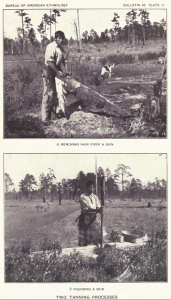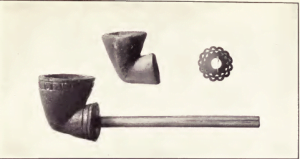Choctaw Usage of Horns
Spoons are made by the Choctaw from cow horns (wak lape’she sti’mpa; literally, cow horn spoon). Two good examples are represented in the following image. In describing the manners and customs of the Choctaw, Adair alluded to “their wooden dishes, and spoons made of wood and buffalo horn;” consequently the making of spoons is a continuation of an ancient art.





